Introduction
Use this guide to replace adhesive strips and re-seal your iPad 4 after a repair.
Only for use with EXISTING front panel assemblies.
Tools
Parts
-
-
Remove the two 2.1 mm Phillips #00 Phillips screws securing the home button control board to the home button mounting bracket.
-
-
-
Wedge the flat edge of a plastic opening tool in between the right end of the home button control board and the home button mounting bracket.
-
Depress the plastic opening tool downwards to pry the adhesive securing the home button control board from the home button mounting bracket.
-
-
-
Use the flat edge of a spudger to scrape the old adhesive off the bottom right corner of the front panel assembly.
-
-
-
Insert the two 2.1 mm Phillips #00 Phillips screws back into the home button control board to secure it against the home button mounting bracket.
-
-
-
In the following steps, you will be placing the remaining pieces of adhesive on the front panel.
-
Do not peel the clear backing off the strips just yet.
-
Place the bridge shaped adhesive strip between the top edge of the inner frame of the front panel and the camera mounting bracket.
-
Smooth the strip down from the center out, taking care to not trap any air bubbles between the strip and the front panel.
-
-
-
Place the straight, medium length adhesive strip on the bottom right side of the front panel, underneath the home button ribbon cable.
-
-
-
Use a pair of tweezers to peel the clear backing up off the adhesive strip directly underneath the home button ribbon cable.
-
Lay the home button ribbon cable down on the adhesive strip and smooth the cable down from the center out, taking care to not trap any air bubbles between the strip and the front panel.
-
-
-
Use a dry microfiber cloth to clean the LCD and inside of the front panel glass. You may want to use canned air or an air compressor to blow away and dust.
-
Use a pair of tweezers to peel the clear backing up off each adhesive strip.
-
To reassemble your device, follow these instructions in reverse order.
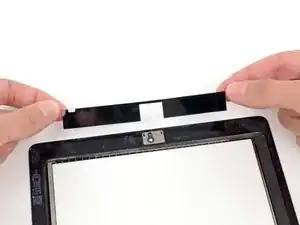



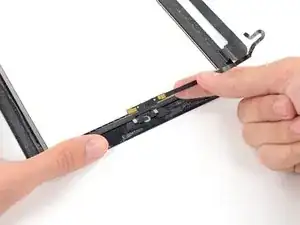
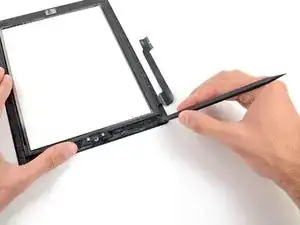

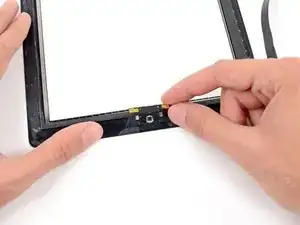

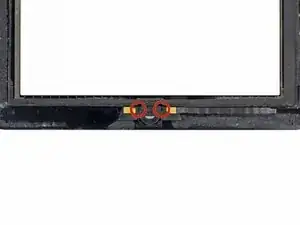
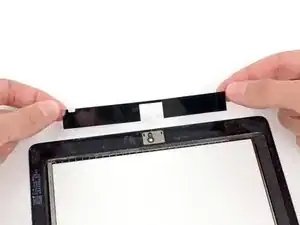
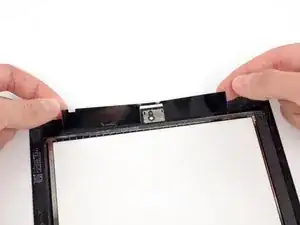
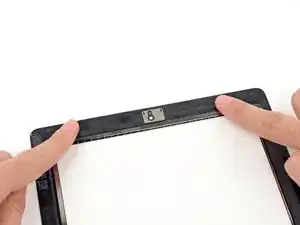
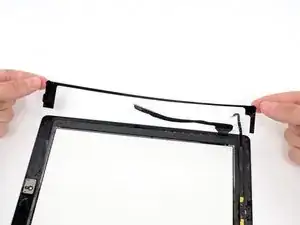
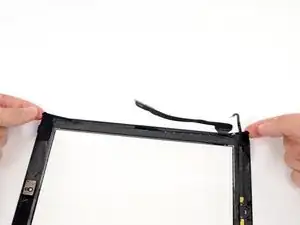

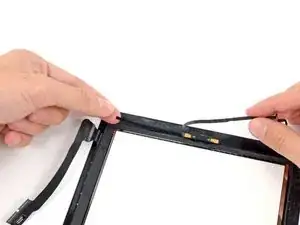

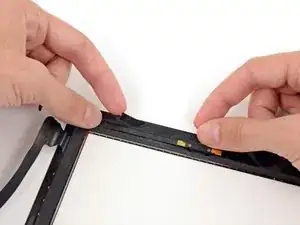

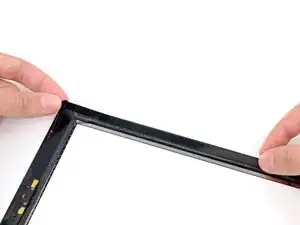
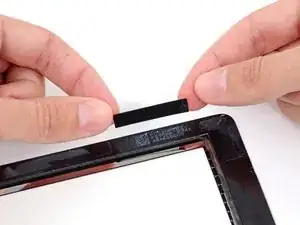


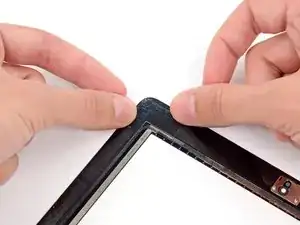
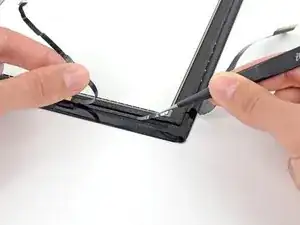
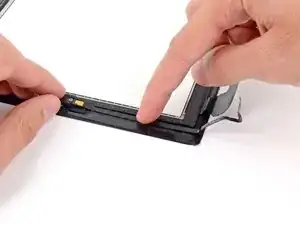

I have just replaced the adhesive on an iPad 4 and did not need to remove and replace the home button. There seemed no reason to remove the button because the adhesive strips did not encroach on the button mount. Removing adhesive is aided by rubbing it with iso propyl alcohol (rubbing alcohol) after striping back the plastic film that covers it. It would be nice if the adhesive would come away with the plastic film but this does not happen even with gentle heat. If you use shart instruments to remove the adhesive its very easy to damage the underlying paint.
geoffrey -